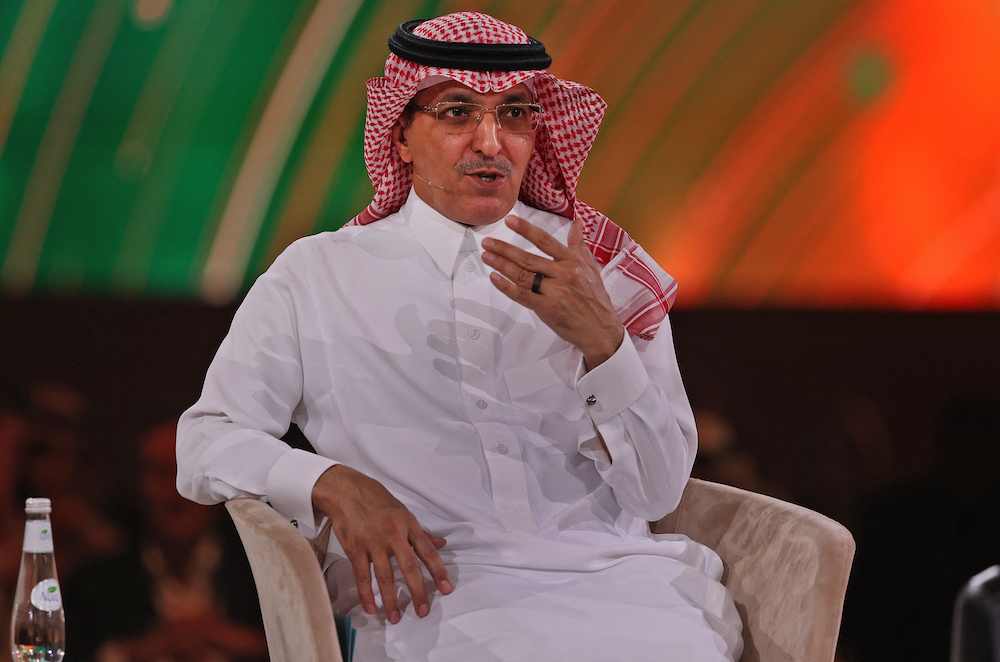RIYADH: Saudi Arabia recorded a budget deficit of SR15.34 billion ($4.09 billion) in the second quarter of 2024, bringing the year’s first-half shortage to 35 percent of the annual forecast set by the Ministry of Finance.
Report revealed 12% increase in revenues compared to same period last year, totaling SR353.59 billion
Taxes on goods and services constituted 50% of non-oil revenues
The latest data indicates that the Kingdom is experiencing a lower-than-expected budget deficit for the year so far, indicating a shift in fiscal management or higher revenues than anticipated in the first half of 2024.
The ministry’s quarterly performance report also revealed a 12 percent increase in revenues compared to the same period last year, totaling SR353.59 billion. Meanwhile, expenditures rose by 15 percent, reaching SR368.93 billion.
Finance Minister Mohammed Al-Jaadan said in December that the Kingdom’s annual budget for 2024 was based on “very conservative” estimates of oil revenues.

Despite this cautious approach, the second quarter of 2024 saw an 18 percent increase in oil revenues compared to the same period of last year, totaling SR212.99 billion. Additionally, non-oil receipts rose by 4 percent, reaching SR140.6 billion.
The rise in oil revenues can be attributed to the increase in crude oil prices over the past year. In the second quarter 2024, the average crude oil price, based on the closing figure at the end of each month, was around $76.69 per barrel, compared to $71.83 for the same period in 2023.
This increase in revenues happened despite production cuts imposed by OPEC+ and additional reductions by the Kingdom, which scaled back output to 9 million barrels per day.
Taxes on goods and services drive non-oil revenues
According to the ministry, taxes on goods and services constituted 50 percent of non-oil revenues, totaling around SR70 billion.
The second-largest share, categorized as Other Revenues, accounted for 20 percent and included income from various sources such as public government units, including the Saudi Central Bank, sales from entities including advertising and port services, as well as administrative fees, fines, penalties, and confiscations.

Other taxes made up 17 percent, or about SR24 billion, while levies on income, profits, and capital gains accounted for 9 percent, totaling SR12.65 billion. This substantial contribution underscores the Kingdom’s efforts to diversify its income sources beyond oil, reflecting effective fiscal reforms and a broader tax base.
Saudi Arabia is actively working to diversify its economy through investments in non-oil industries such as tourism, entertainment, and renewable energy. Initiatives like Vision 2030 aim to reduce oil dependency by promoting a more diverse and sustainable economic landscape.
Expenditures
Saudi Arabia’s non-financial capital expenditure, often referred to as CAPEX, drove much of the spending growth in this period.
This category saw a 53 percent increase, totaling SR66.41 billion, and it encompasses investments in physical assets like buildings, machinery, and infrastructure, aimed at enhancing the Kingdom’s capacity and capabilities.
The ministry had indicated in its budget statement in December for the fiscal year 2024 that there will be increased spending during the coming years to expedite the implementation of key programs vital to the objectives of Saudi Vision 2030. Therefore, the quarterly deficit remains within expectations, reflecting prudent fiscal management.

Compensation to employees constituted the highest percentage share at 38 percent according to the ministry’s report and increased by 4 percent during this period. Utilization of goods and services came second making up 20 percent share and rising 19 percent compared to the same quarter last year.
This category represents the total amount spent on acquiring goods and services by the government for various purposes, such as operational activities or resale. It reflects the government’s consumption or investment in resources necessary for its operations, excluding any changes in inventory levels.
The ministry’s report indicated that the deficit will be covered through borrowing.
Domestic debt comprised 59 percent, or SR680.29 billion, of the total at the end of the period, while external borrowings made up the remaining 41 percent, totaling SR468.92 billion.
Compared to advanced economies and G20 countries, Saudi Arabia’s public debt as a percentage of GDP remains relatively low. Furthermore, it is well-supported by government reserves, providing a significant buffer against potential financial challenges or economic downturns. This strengthens the Kingdom’s fiscal stability and its capacity to meet financial obligations.
Source: Arab News



